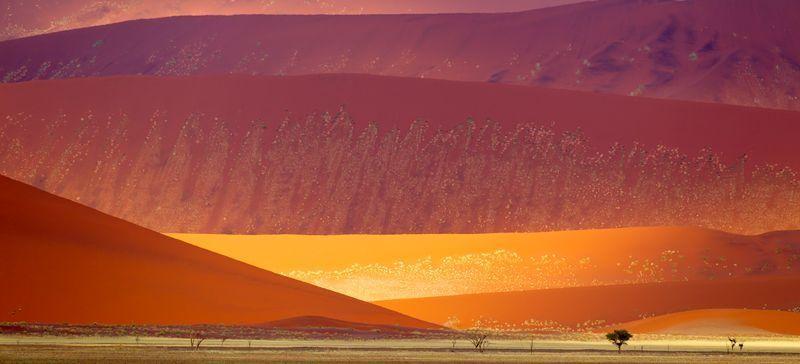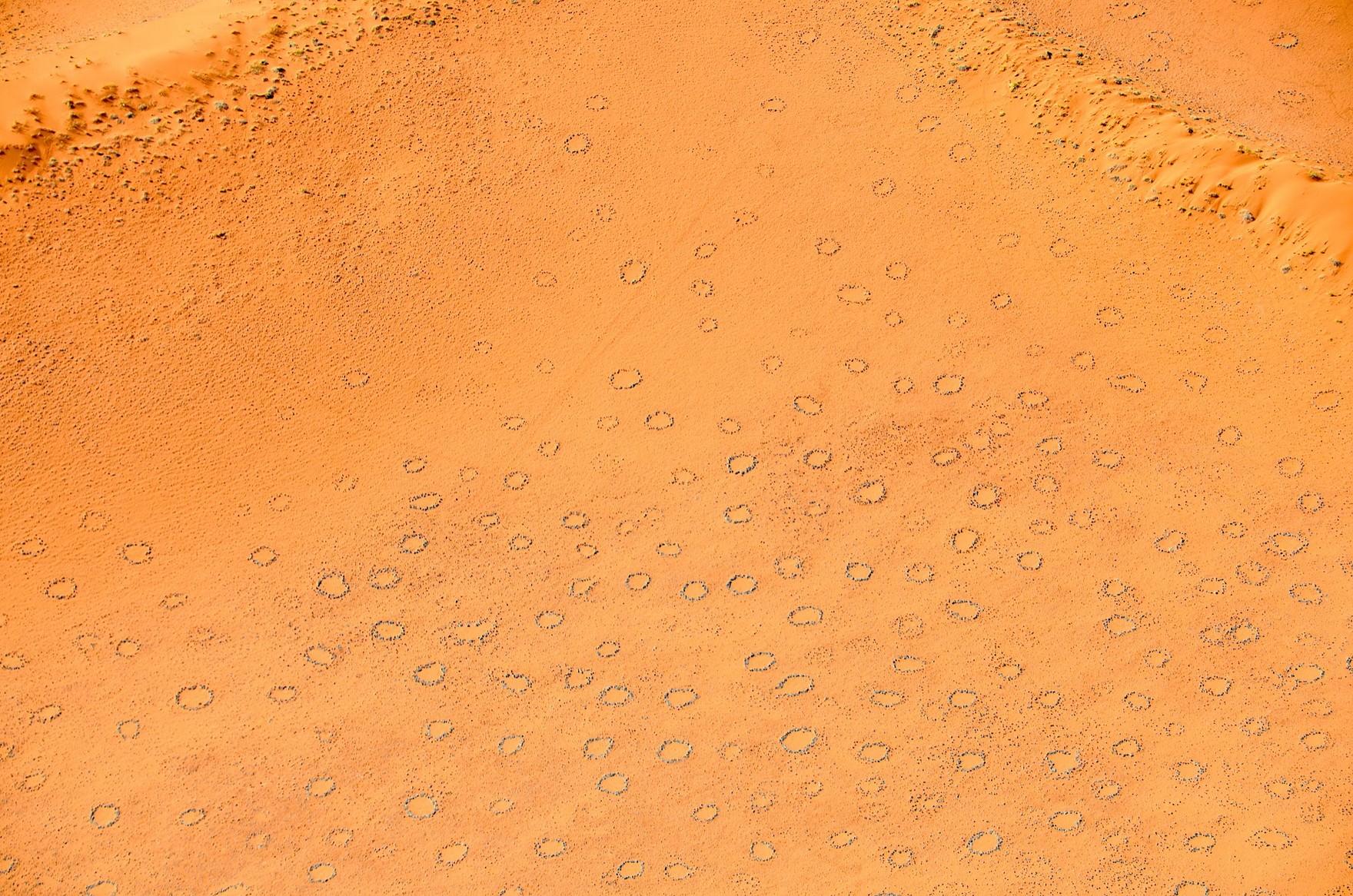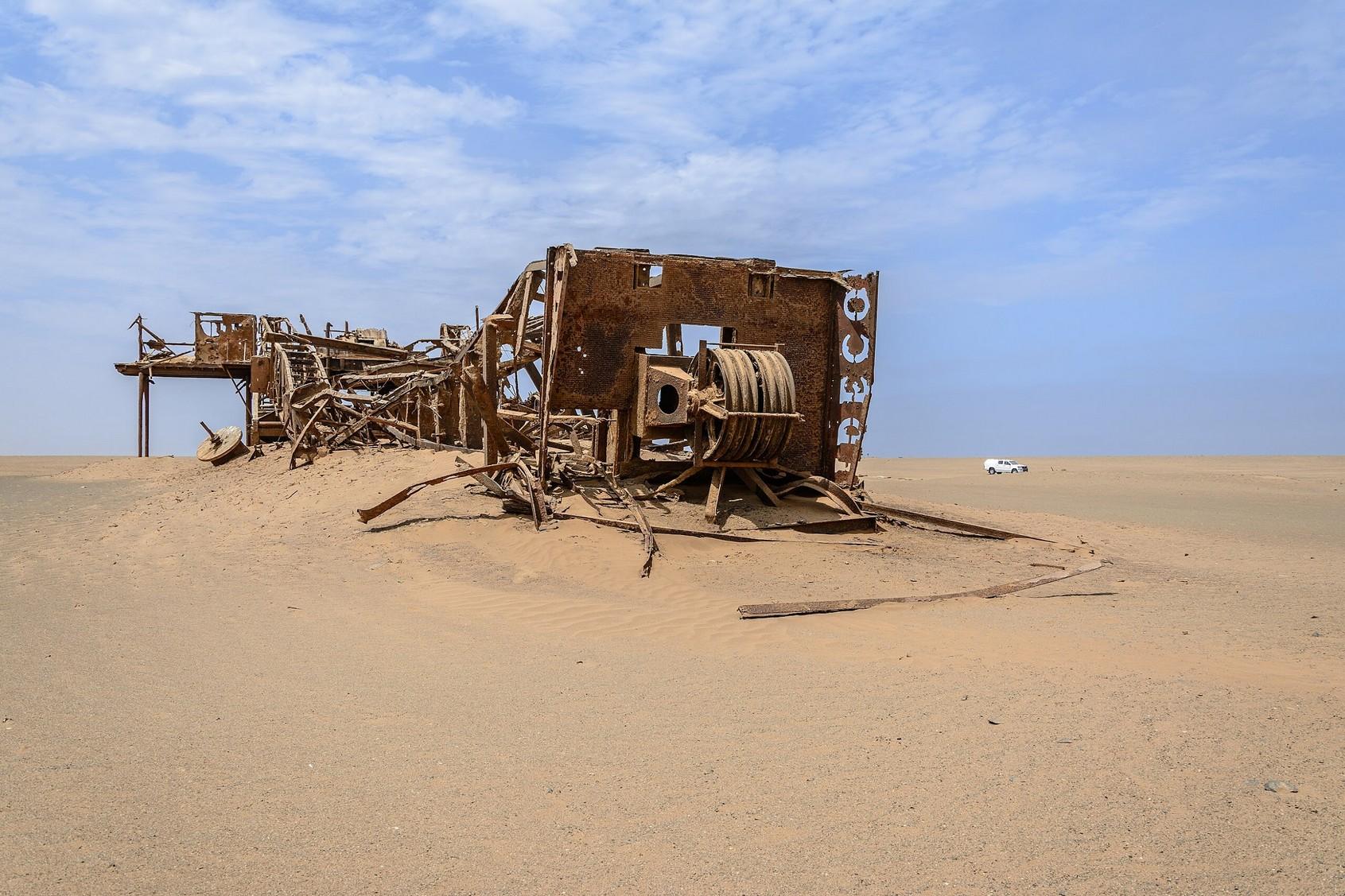Link: https://www.iflscience.com/the-oldest-desert-on-earth-is-home-tofairies-miracle-plants-and-toto-73631
Please see link above for source text.
The Oldest Desert On Earth Is Home To "Fairies", Miracle Plants, And... Toto?
I bless the fog down in Africa.
DR. KATIE SPALDING

April 3, 2024
Freelance Writer
Edited by Maddy Chapman


The Namib desert is home to some breathtaking views, including vivid red sand dunes that stretch miles across and hundreds of meters above the ground.
Image credit: Yathin S Krishnappa CC BY-SA 3.0 via Wikimedia Commons
The Namib desert is named for what it is: “an area where there is nothing,” in the local Nàmá language. And at first glance, the region lives up to the title, covering around 1,600 kilometers (990 miles) along the western coast of Africa – straddling three countries as it does so – in some of the dryest, sandiest, and most inhospitable environments on Earth.
But in fact, the desert is far from empty. Not only is there plenty of life –some of it so specialized to the region that it can’t be found outside of the Namib – but there’s also beauty, danger, mystery, and … classic rock?
A world unto itself
The Namib is home to thousands of species of animals and plants – and for a surprisingly high percentage of them, it’s the only place they call home. Here, among sand dunes larger than almost any other on the planet, you can find highly adapted desert elephant populations; dune larks, who have
figured out a way to live without ever drinking water; Namib Desert beetles, whose ability to harvest water out of thin air has captivated scientists for decades; and the iconic Welwitschia mirabilis, once described by the Director of the Royal Botanical Gardens at Kew as “out of the question the most wonderful plant ever […] and the very ugliest.”
What makes the region such a unique biome? It’s not just because of the unusual environmental conditions – although that of course helps. But while the Namib is far from the only sandy, arid desert in the world, what it really has over the competition is time: “Because [it] is one of the world's oldest deserts, the extraordinary way that plants, animals, and even human populations have adapted and evolved in order to survive here is fascinating,” wrote Chris McIntyre, managing director of Expert Africa, in 2007.
Precisely how old is still a matter of debate – but we know for sure it’s at least 55 million years old: that’s when “the earliest unequivocal evidence of desert conditions in the Namib […] is provided by extensive fossil dunes known as the Tsondab Sandstone Formation,” explained renowned conservation scientist Brian John Huntley in 2023. To put it into context, that’s at least eight times as old as the Sahara; in fact, the Namib was a desert back when its larger cousin to the North was an aquatic monster world.
Regardless of the desert’s true age, it’s without doubt time enough for local flora and fauna to adapt to a climate in which stable ground is sparse and annual rainfall of just 2 millimeters (0.08 inches) is normal. “The extreme aridity of the Namib Desert places severe limits on the survival of most vertebrates, especially amphibians. However, many reptiles and birds have developed successful adaptations to life in the desert,” wrote Huntley.
“The largest bird on Earth, the African Ostrich, was once common on the margins of the Namib, while two large bustards (Ruppell’s Korhaan and Ludwig’s Korhaan) are still to be found on the gravel plains and intermontane grasslands of Iona,” he noted. “Mammal species include
nomadic herds of Springbok, Gemsbok, Plains and Hartmann’s Zebras, and sedentary carnivora such as Meerkat and Aardwolf. Brown Hyaena and Cheetah range widely over the desert margins.”
Home of the supernatural
If local folklore is to be believed, springbok and hyenas aren’t the only things that call the Namib home. Dotting the landscape across the rusty sand dunes and the flat gravel plains that lie further inland are circular patches of sand, ranging from around 1.5 meters (5 feet) in diameter to as large as 25 meters (82 feet), and entirely surrounded by a single species of grass. They’re called “fairy circles” – and while science has yet to conclusively prove how they’re formed, the local Himba people have long known the answer: they’re footprints, left in the desert by the god Mukuru.
For others, the circles are caused by “UFOs or fairies dancing at night,” Hein Schultz, owner of the Rostock Ritz Desert Lodge located just outside the Namib-Naukluft National Park, told the BBC. But when it comes to non-supernatural explanations, nobody is totally convinced either way.
One early hypothesis was that the grass in the center was being poisoned by a local shrub known as Euphorbia damarana, or the Damara milk-bush. The plant would die, the theory went, leaving the ground where it originally stood too toxic to support vegetation; the surrounding ring of grass would survive, marking the boundary of where the shrub had affected.
It was a neat idea, but it was wrong: in 2020, a research team followed up on the now-decades-old work of the botanist who first proposed it, investigating the areas where he had noted milk-bushes standing back in the 1970s. The results were clear: “based on our detailed field observations,” concluded Stephan Getzin, a researcher in the Department of Ecosystem Modelling at the University of Göttingen, “we have to reject the euphorbia hypothesis.”

Aerial view of Fairy circles within Namib-Naukluft National Park, 2017.
Image credit: Olga Ernst & Hp.Baumeler, CC BY-SA 4.0, via Wikimedia Commons
More tenacious were two other ideas: one having the plants arrange themselves in the geometrical patterns to cope with the region’s water scarcity, and the other demoting the circles’ builders from fairies… to termites. “Both theories are normally presented as mutually exclusive,” noted Juan Bonachela, then a lecturer in the University of Strathclyde's Department of Mathematics and Statistics, in 2017.
But that need not be the case, he said. “Our findings harmonize both theories and find a possible explanation for […] Fairy Circles,” Bonachela explained. “Termites remove vegetation on their mounds to increase moisture, which is essential for the insects' survival in dry environments, thus creating the bare disk. Vegetation around the mound takes advantage of this water accumulation to grow, and this taller vegetation forms the circle. Regular repetition of the pattern results from different termite colonies competing next to one another.”
Even this compromise has its detractors: as recently as last month, rival gangs of ecologists were publishing rebuttals to the idea that termites might be to blame. For now, it seems, this is a mystery that defies scientific investigation.
The Gates of Hell
It’s not just fairies that maintain a presence in the Namib. Elsewhere in the desert, you can find the so-called Skeleton Coast – although you’d perhaps be better off if you didn’t: it’s known to the Khoisan Bushmen who live there as “the land God created in anger”, and the view is one filled with death.
“Before crossing into the 6,300-square-mile [16,300-square-kilometer] area of protected coastline, we were obliged to give our names and information – lest we didn’t make it out before nightfall,” recalled documentarian Genna Martin in the New York Times.
“This arid desert, which dead-ends into violent Atlantic swells, has caused many unfortunate sailors, ships, aircraft and animals their untimely deaths. Their carcasses – rusting vessels, sun-bleached bones – are now visible reminders of the park’s hostile conditions,” she wrote. “It is an inhospitable place where almost nothing grows, and where dangers, from wild rip curls to thick coastal fog, abound.”
So foreboding is the region that the 15th century Portuguese explorer Diogo Cão famously labeled it “The Gates of Hell”. To a sailor like him, the name was apt: nearly 1,000 shipwrecks can be found along the shore, doomed by the thick fogs that roll in from the Atlantic and obscure the coast.

If it looks like something out of Mad Max... well, that's because it is. Image credit: Domenico Convertini from Zurich, Schweiz, CC BY-SA 2.0, via Wikimedia Commons
I bless the rains
Of course, if near-certain death isn’t enough to earn the desert such a diabolical moniker, there’s always the ace up its sleeve: the drums echoing tonight, and the wild dogs crying out in the night as they grow restless, longing for some solitary company.
That’s right: we’re talking Toto. “[I] wanted to pay the song the ultimate homage and physically exhibit ‘Africa’ in Africa,” said Namibian artist Max Siedentopf. And so, he did: somewhere in the Namib, he installed a sixspeaker sound system attached to an MP3 player, set to play the 1982 classic on repeat. Forever.
It’s powered by solar batteries, “to keep Toto going for all eternity,” he told the BBC in 2019. “Most parts of the installation were chosen to be as durable as possible, but I'm sure the harsh environment of the desert will
devour the installation eventually.”
When it does, we’ll likely not know. It was installed in a mystery location, raising an interesting philosophical question: if a semi-ironic soft-rock ballad plays on loop in a 55-million-year-old desert and nobody is there to hear it, does it make a sound?
For some, the answer is apparently, “I hope not.” “Some [Namibians] love it, and some say it's probably the worst sound installation ever,” Siedentopf admitted. “I think that's a great compliment.”
